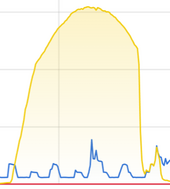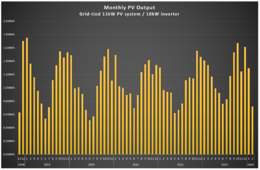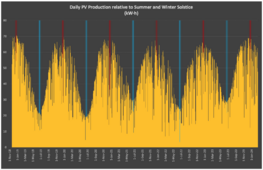hautions11
New Member
In the winter, my panels get filtered sun through some leafless trees to the south. What I have noticed is a big difference between clear sunshine days and days with filtered sun. On the filtered sun days I consistently pull a couple of KWH's more then the clear days. It must have something to do with sharp shadows crossing the panels on clear days. Has anyone ever seen this kind of output change, or any other ideas why I see this kind of difference?





